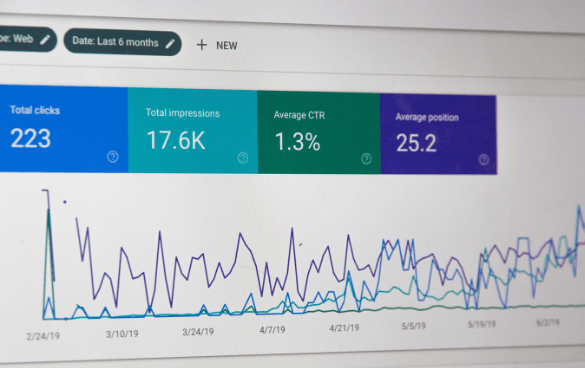Advanced Techniques for Remarketing In Google Analytics
Advanced Techniques for Remarketing In Google Analytics
Blog Article
Unlocking Remarketing in Google Analytics: Increase Your Conversion Fees
The art lies in strategic target market division and crafting engaging advertisement material that reverberates with individuals. The key to unlocking the full capacity of remarketing exists in recognizing individual actions and interests to optimize ROI.
Recognizing Remarketing in Google Analytics
Remarketing in Google Analytics is an effective device that enables organizations to re-engage and target with individuals who have previously interacted with their internet site or app. By using this feature, companies can present targeted ads to users as they browse the web or make use of various other applications, advising them of services or items they formerly checked out. This calculated technique helps services stay top-of-mind with possible consumers, increasing the possibility of conversion.
One key element of remarketing in Google Analytics is the ability to develop custom audience checklists based upon details standards such as web pages checked out, actions taken on the website, or market details. These checklists allow companies to tailor their remarketing projects to various sections of their target market, making certain that the appropriate message reaches the best individuals at the correct time.
Furthermore, remarketing in Google Analytics gives important insights into user actions and the effectiveness of advertising and marketing projects. By tracking customer interactions and conversions, organizations can improve their methods to improve targeting and maximize ROI. In general, recognizing the ins and outs of remarketing in Google Analytics is vital for businesses seeking to improve conversion rates and drive growth.
Establishing Up Remarketing Lists
When implementing remarketing approaches in Google Analytics, the first step involves producing customized audience lists tailored to particular criteria. These lists are crucial for targeting specific teams of customers who have communicated with your internet site in a particular way. To establish up remarketing checklists efficiently, navigate to the Admin area of Google Analytics, then select the preferred account and residential or commercial property (What Is “Remarketing” In Google Analytics?). From there, click Target market Interpretations and choose Audiences. Next off, click the +New Target market switch and pick the sort of audience you intend to develop, such as users who visited a particular page or completed a particular action. You can even more refine your audience by adding specific conditions and parameters to guarantee you reach the appropriate customers with your remarketing campaigns.

Crafting Compelling Remarketing Ads
Crafting compelling remarketing ads includes tactically developing messages that resonate with your target market and drive them to take preferred actions. To create efficient ads, it's vital to understand your audience's behaviors, requirements, and preferences. Customization is type in remarketing advertisements, so think about using vibrant advertisements that show services or products that a user has previously watched on your web site. This customized method can considerably increase involvement and conversions.
Along with customization, compelling ad copy is essential. Your messaging ought to be clear, succinct, and highlight the one-of-a-kind marketing factors of your product and services. Use solid phone calls to action that motivate users to act, such as "Shop Now," "Find out more," or "Subscribe Today." Consisting of rewards like discount rates or limited-time offers can also aid boost click-through prices.
A visually appealing advertisement is much more likely to grab the target market's attention and drive them to click to investigate review your web site. By incorporating customization, convincing copy, and captivating visuals, you can develop remarketing advertisements that effectively re-engage individuals and improve your conversion prices.
Analyzing Remarketing Performance

Conversion prices disclose the percent of customers who completed a wanted action, such as making a purchase or authorizing up for an e-newsletter, after clicking on the advertisement. Examining the expense per procurement helps in understanding the costs incurred to acquire a consumer through remarketing. By evaluating these performance metrics, marketers can determine areas for renovation and improve their remarketing approaches to improve conversion rates and general campaign success.
Maximizing Remarketing Techniques

Furthermore, maximizing remarketing methods involves segmenting target markets based on numerous requirements such as demographics, actions, and rate of interests. By developing targeted advertisements that resonate with each sector, marketing experts can raise the chance of re-engaging individuals and driving conversions.
Continuous tracking and optimization of remarketing projects based on real-time information and insights are important for directory maximizing ROI and enhancing conversion prices. By executing a data-driven strategy and refining approaches based get more upon efficiency metrics, marketers can unlock the complete potential of remarketing in Google Analytics.
Conclusion
In conclusion, taking advantage of the power of remarketing in Google Analytics can substantially improve conversion rates by re-engaging with previous site site visitors with customized ads. By producing custom target market lists, crafting compelling ads, assessing efficiency metrics, and continuously optimizing approaches, services can take full advantage of ROI in remarketing campaigns. This data-driven method ensures that advertising initiatives are targeted and effective in driving user interaction and inevitably boosting conversions.
Overall, recognizing the intricacies of remarketing in Google Analytics is crucial for organizations looking to boost conversion rates and drive growth.
You can additionally fine-tune your audience by including details conditions and specifications to guarantee you get to the best users with your remarketing projects.
By integrating customization, convincing copy, and captivating visuals, you can create remarketing ads that effectively re-engage users and increase your conversion rates.
By examining these efficiency metrics, online marketers can recognize locations for renovation and improve their remarketing strategies to boost conversion rates and overall campaign success.
In conclusion, using the power of remarketing in Google Analytics can dramatically boost conversion prices by re-engaging with previous internet site visitors through customized advertisements.
Report this page